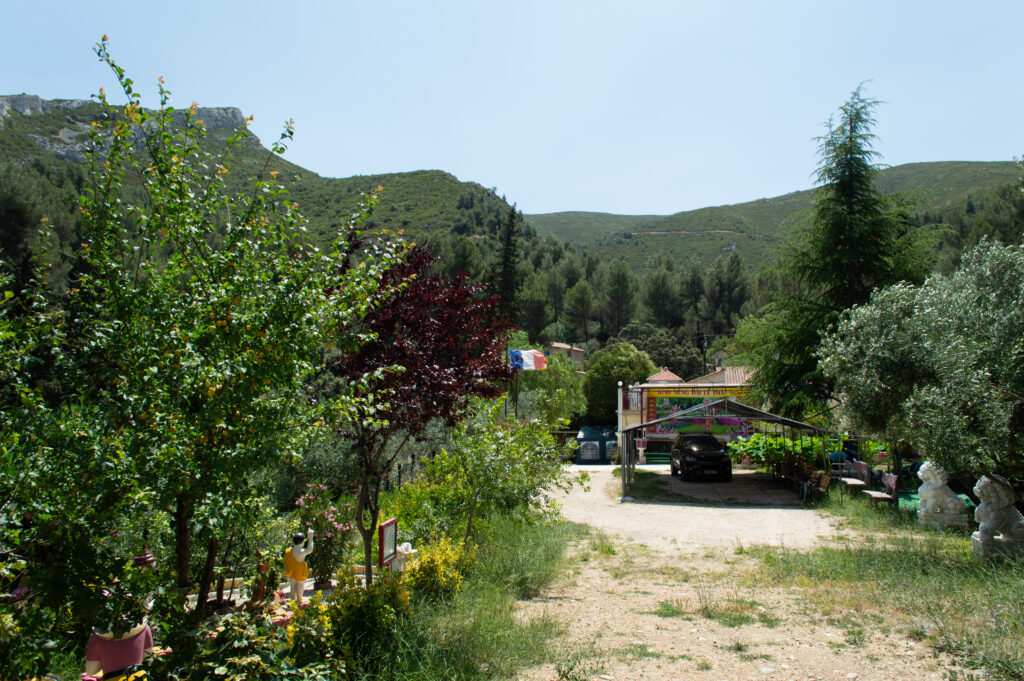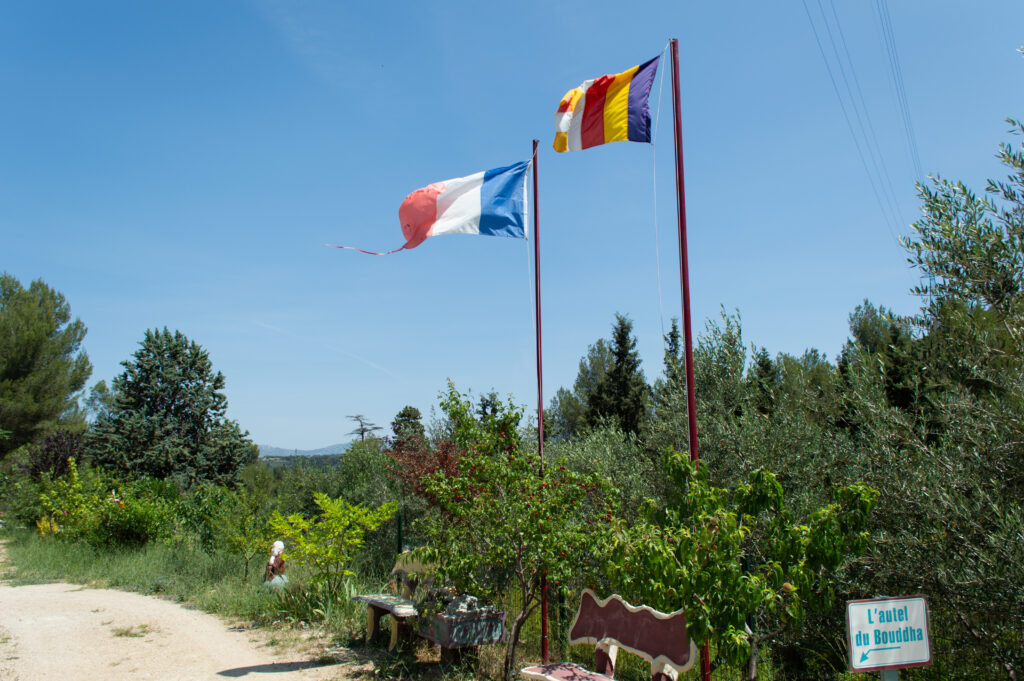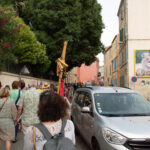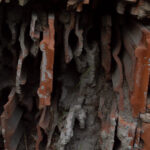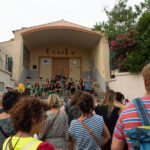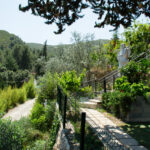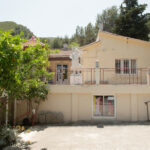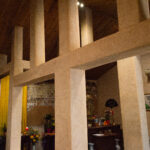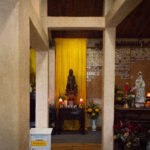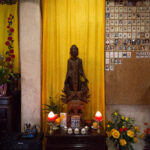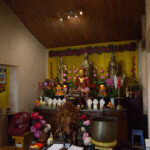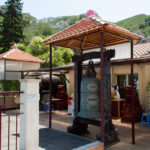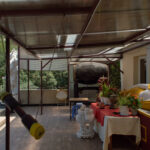Marseille
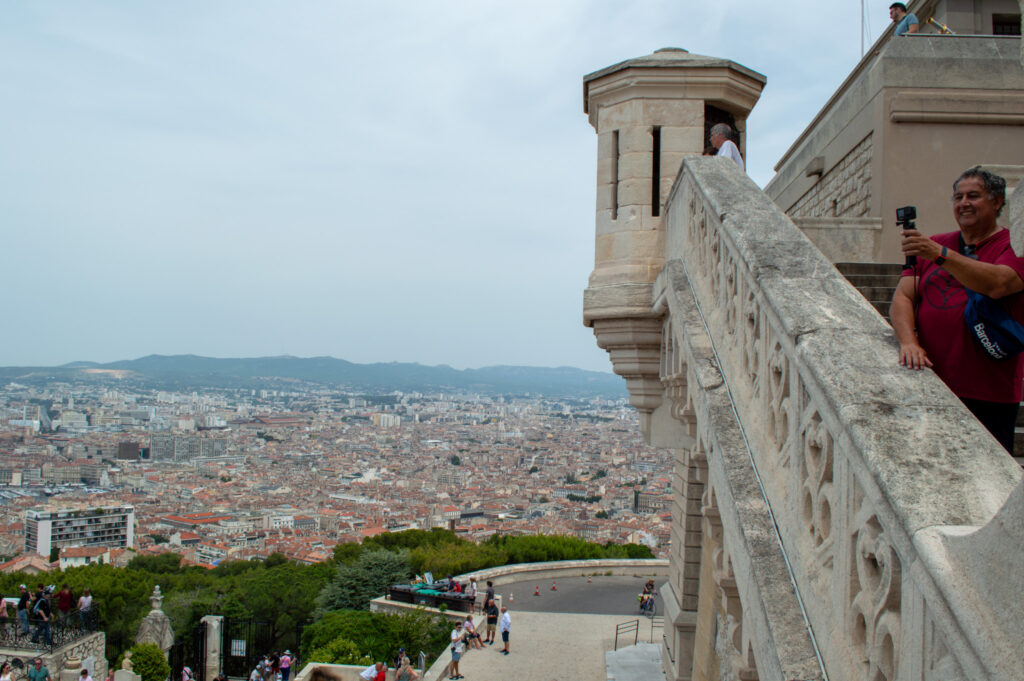
The announcements on the train switch order from Italian/French to French/Italian. We sweep past cities whose names I’ve only read about in relation to celebrities vacationing and spending large sums of money. Nice, Cannes, Monaco and a number of beach towns whose freshly tanned inhabitants flock into the train. Soon, the aisles are filled with families and couples two bodies deep. I have to get out but unfortunately forget one of the five French phrases I actually know, “excusez-moi.” Overwhelmed and squished, I am saved by a young British woman who yells unabashedly in English for people to get out of the way. They listen. I hop onto a train headed to Marseille thinking about the 100 Years’ War.
Marseille is old, ancient, founded by Greek settlers. The city has historically been a hub for trade and migration. This legacy runs deep and for the past century the city has been increasingly made up of people who trace their roots elsewhere. I’ve never seen a city like it; tremendous. The only problem is that my contact who was supposed to show me around has not responded and will continue to not respond for the entirety of my trip. No hard feelings, they were doing me a favor. My time in Marseille will serve to teach me that my project is more of a sampling platter than the in depth research I’d fantasized about. It is frankly a little insulting to think that I could learn enough to tell the story of any city in seven days, let alone Marseille’s story. Here is a major pivot in my project: I am documenting stories in complicated and dynamic cities. I am presenting tableaus which share the stories and spaces people were kind enough to show me. I am an observer, a flaneur, but hopefully less pretentious.
While looking up people to reach out to, I had found a co-op (1) comprised of people renting rooms and giving tours. I was fortunate enough to stay my first few nights in the Noailles neighborhood in a room facing a courtyard filled with plants and a cat. The owner and proprietor Stephanie invited me to one of the co-op’s events, a musical procession through a historically immigrant working class neighborhood. This is part of France’s nationwide night of music festivals for the summer solstice, something I had no idea happened. She drives us up to the Saint-Andre neighborhood in the quartiers nord (the Northside, largely infamous amongst European pearl-clutchers). I speak virtually no French and Stephanie’s English has holes in it so our communication is largely smiling and miming.
We arrive to a yard behind a bar steadily filling in with colorfully dressed people. The vibe is very Berkeley, but in a French Mediterranean font. Flyers are handed out with the lyrics to songs in Spanish, Italian, Portuguese, Arabic, and the Provencal dialect. This neighborhood has long attracted immigrants coming to work in the clay tile industry which Marseille was once famous for. The co-op is trying to make people aware of this history by hosting workshops and in today’s case singing songs in the languages of people’s great grandparents. I learn this little by little as Stephanie brings people over to me to explain what exactly is going on.
A song begins led by a women in yellow and a man with long hair. People know this one and sing along. The musical procession proceeds. We move out, with the group of fifty or so holding instruments and staffs decorated in a variety of bright colors. One man emerges as the MC of sorts, recounting a tale in a very animated manner. I sort of catch on as he goes. At one stop he climbs a ladder and begins saying words in Italian, bringing forth laughter from the many little children present. He points to a man directly behind me (2), mockingly calling him Marcello in a tick Italian accent. More laughter from the kids. At some point the MC says something along the lines of “No longer Marcello, today he is Marcel!” The children erupt in shouts of joy and saxophones and trumpets start vamping. Candy is liberally doled out to anyone under the age of ten and the MC triumphantly looks on over the crowd. I have only a vague idea of what has transpired but I understand that Marcel has Italian ancestors. Stephanie asks her friend Chloe to explain what’s going on. The story goes that back in the day an Italian immigrant who was Marcel’s great-grandfather established what was referred to as the Church of Light. From what I understood, this wasn’t a traditional religion, but more of a philosophy about being a good person devoid of God or gods. The MC had been narrating a more in-depth version, but I am thankful for Chloe’s explanation.
More stops, more songs in different languages. At some point Stephanie introduces me to Charlie, a London transplant to Marseille with a feather in his hat and homemade wine in his bag. He explains a bit about the history of this neighborhood, how it is known for clay tiles and that even the buildings are built of stacked clay tiles. You can see this in the spots where the stucco has opened up on the houses, revealing tiles layered like bricks. He also tells me a bit about Rudolf Steiner, the history of the Hotel du Nord co-op, and his hunch that some Santeria-adjacent practices can be found in Marseille. He assures me that with enough time I can find some spaces that practice alternative religions. The only problem is that by this point I have only a few days left.
As we walk through the street we slow traffic to a halt. Two young men in a blue car show their frustration by loudly revving their engine. Flamenco music with the bass boosted pours out of their open windows as people in our crowd work to smooth over the tension with these tank-topped young men. Finally relaxed, we walk make space and they make their left turn.
The procession ends at a park where musicians and food vendors are set up. Stephanie, as generous of a host as you can imagine, buys me a beer and later shares some of her bean soup with me. More people suggest that I visit this place or that place (3) and eventually Chloe makes the point that one week is not enough to do a comprehensive study of Marseille. She is right. Over the course of the last few hours I learned that this one neighborhood is so full of history as to merit its own project. The other 110 neighborhoods scattered throughout sixteen arrondissements is the work of a lifetime, perhaps even two lifetimes. Trying to restructure the way I’m thinking about this project in my head, I am offered crackers with homemade pesto, a Marseille staple. Kids play soccer as people sing, and we get ready to head back to Noailles.
1: https://www.hoteldunord.coop/la-cooperative-dhabitants/
2: For a brief and terrifying second, I think he is staring at me.
3: There is supposedly a church established by Roma people under a highway somewhere in the quartiers nord…
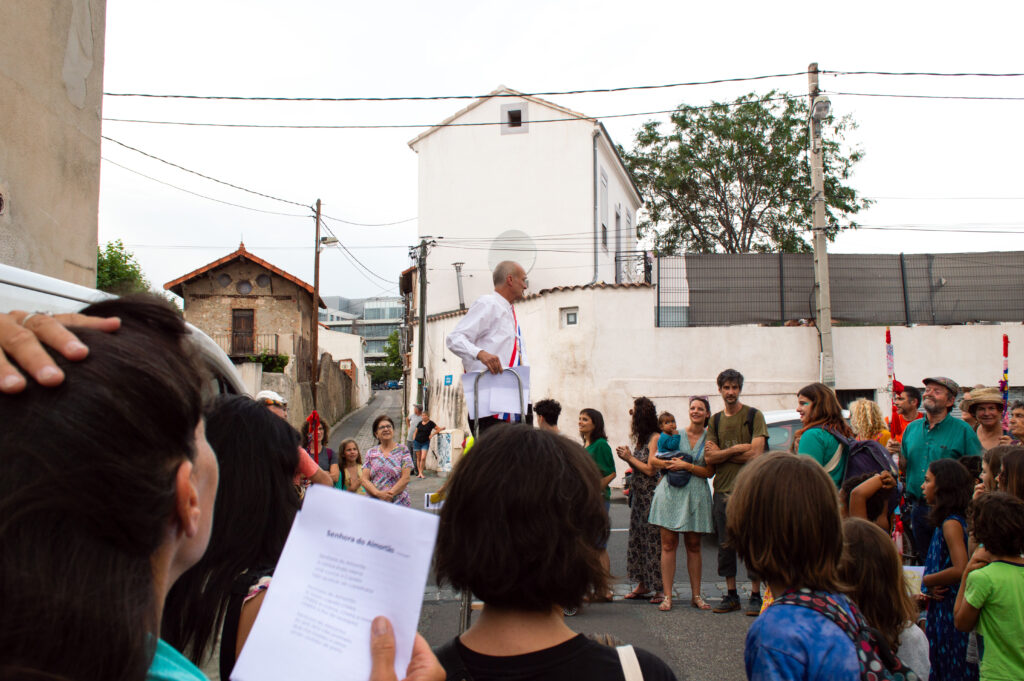
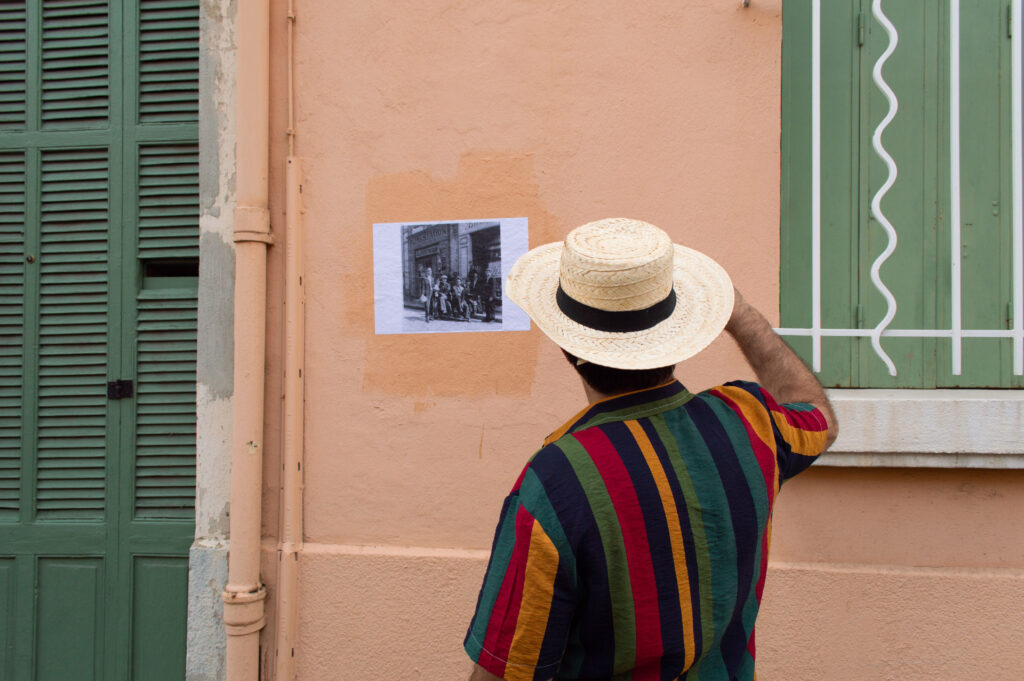
Later that week I take the bus to the outskirts of the city. Then I walk fifteen minutes on a sidewalk, and then another ten past where the sidewalk ends. The houses gradually spread out and give way to forest. I continue forward until I see a golden Buddha head floating above the trees. The gate to the Truc Lam Pagoda welcomes me as I go up a hill to meet the venerable Thich Hanh Quang. There are a few people seated outside who eventually tell me Thich Hanh Quang will be free in a moment.
I sit down and take some photos. The pagoda is at the foot of the mountains surrounding Marseille, an area very reminiscent of Southern California. A woman comes out and eventually leads me into a large room where a monk sits waiting. I sit down and introduce myself to the venerable Thich Hanh Quang, a man in his early thirties wearing a burgundy robe. He sits at the head of a long table and I sit to his right side. He is very gracious in answering my questions. I learn that the Vietnamese community in France is fairly large and exists due in large part to Vietnam’s colonial history. The first Vietnamese immigrants came to Marseille between 1912-1940, working mainly in the ship building business. The earliest Buddhist temple was set up in France in 1918. I cannot find any trace of it online, so my guess is that it was not known by the general public. Today in Marseille there are three Buddhist temples, two of which were founded by the Vietnamese community. Architecturally speaking, they are not traditionally Vietnamese. I don’t know about the other two, but Truc Lam is noticeably a converted house, a maison that the community has been meeting in since 1988.
The venerable Thich Hanh Quang tells me that the next and larger wave of Vietnamese immigrants came after 1975, once the United States was defeated and kicked out of Vietnam. The largest cities to receive refugees from Vietnam were Paris, Lyon, and Marseille. Today, immigration from Vietnam mainly occurs amongst students who want to study in France’s universities.
The generation that came after the war worked and continues to work mainly in restaurants. Walk around Marseille for a half hour and you’ll come across all manner of Vietnamese cuisine. The degree of cooking becomes evident once the women hard at work in the kitchen start bringing out plates of vegetarian food. Parishioners, the ones who’d been relaxing outside, make their way indoors. A mixture of Southeast Asian people–first and second generation–as well as white French people fill the table. Thich Hanh Quang prays and the food starts to be passed around. I cannot stress how delicious everything tasted. Years cooking on the line were manifested as an offering to all those gathered. The air fills with a combination of Vietnamese and French, sometimes in the same sentence. The people near me translate as one man begins recounting his stories. He’d spent decades in restaurants in France after moving from Hue, Vietnam and was proud of all the good work he had done. His children on either side of the table testify to his hard working and pious personality.
After lunch, the venerable Thich Hanh Quang lets me wander around the grounds to take more photos. A staircase on the side of the two story house leads to the roof where I find large statues and a bell specifically cast for the Truc Lam Pagoda. A bit later, the venerable Thich Hanh Quang comes up with me and shows me the interior prayer space. It is air conditioned and smells like incense. The space consists of a large room filled with statues, photos, and incense. It is apparent that walls were knocked down to create a continuous open space, but columns were left and arranged in a decorative manner. The temple itself can be understood as two large open rooms stacked on top of each other with static spaces at the periphery. The bottom room is flexible in that it accommodates a variety of social functions while the top room is static in its fixed use as a prayer space. Then there are the rest of the grounds which are dotted with statues and playground equipment, as well as an apartment for the monk.
There are about two dozen people at Truc Lam on this Friday afternoon, a close-knit community who’ve seemingly known each other for years. They gather in the shade around a swing set where a laughing toddler absorbs everybody’s attention. I say my goodbyes to the venerable Thich Hanh Quang and the rest of the people and make my way back through the woods to Marseille’s urban core.
